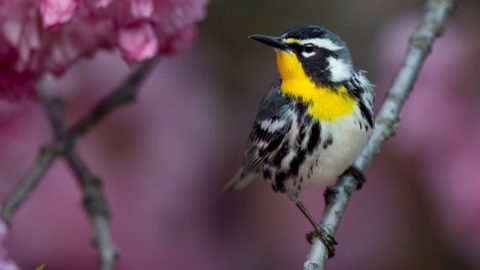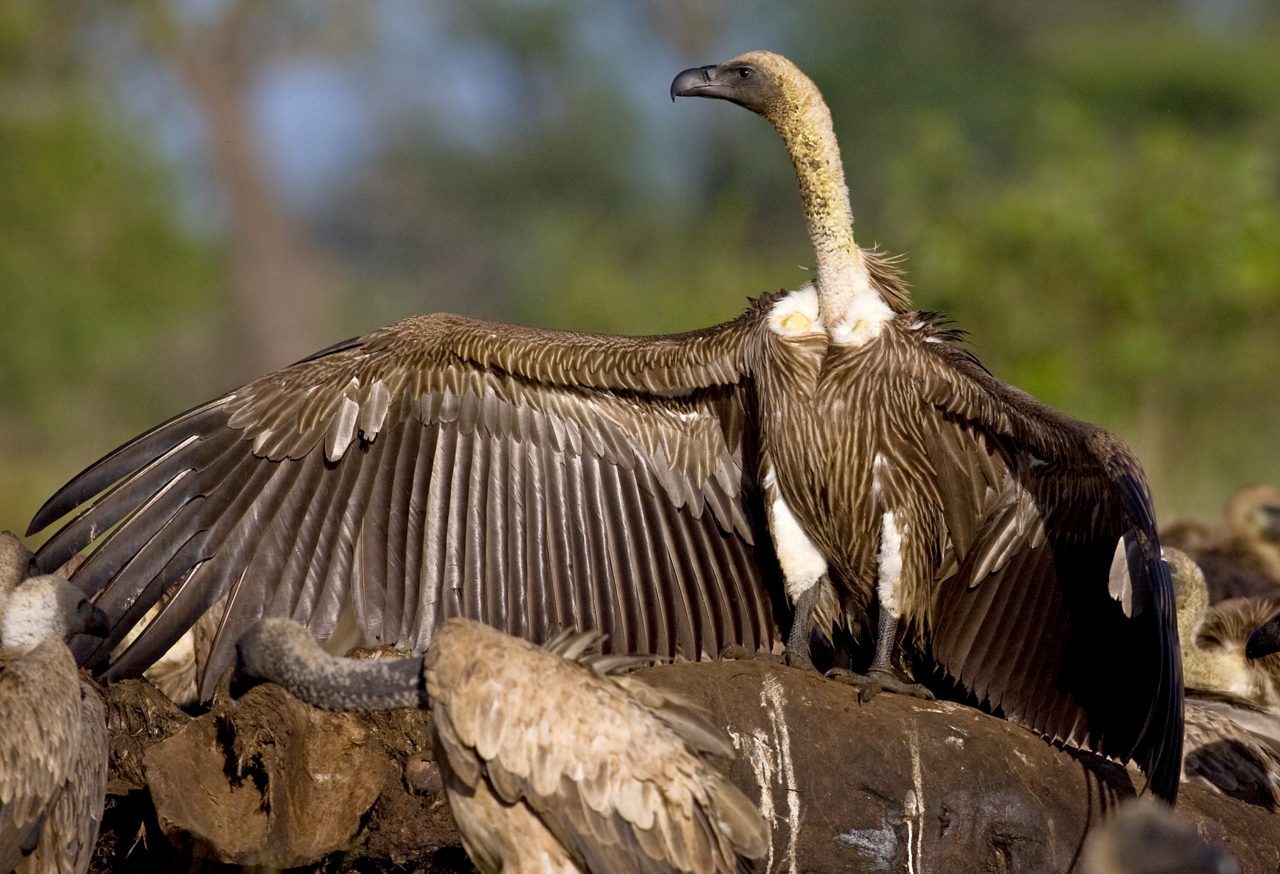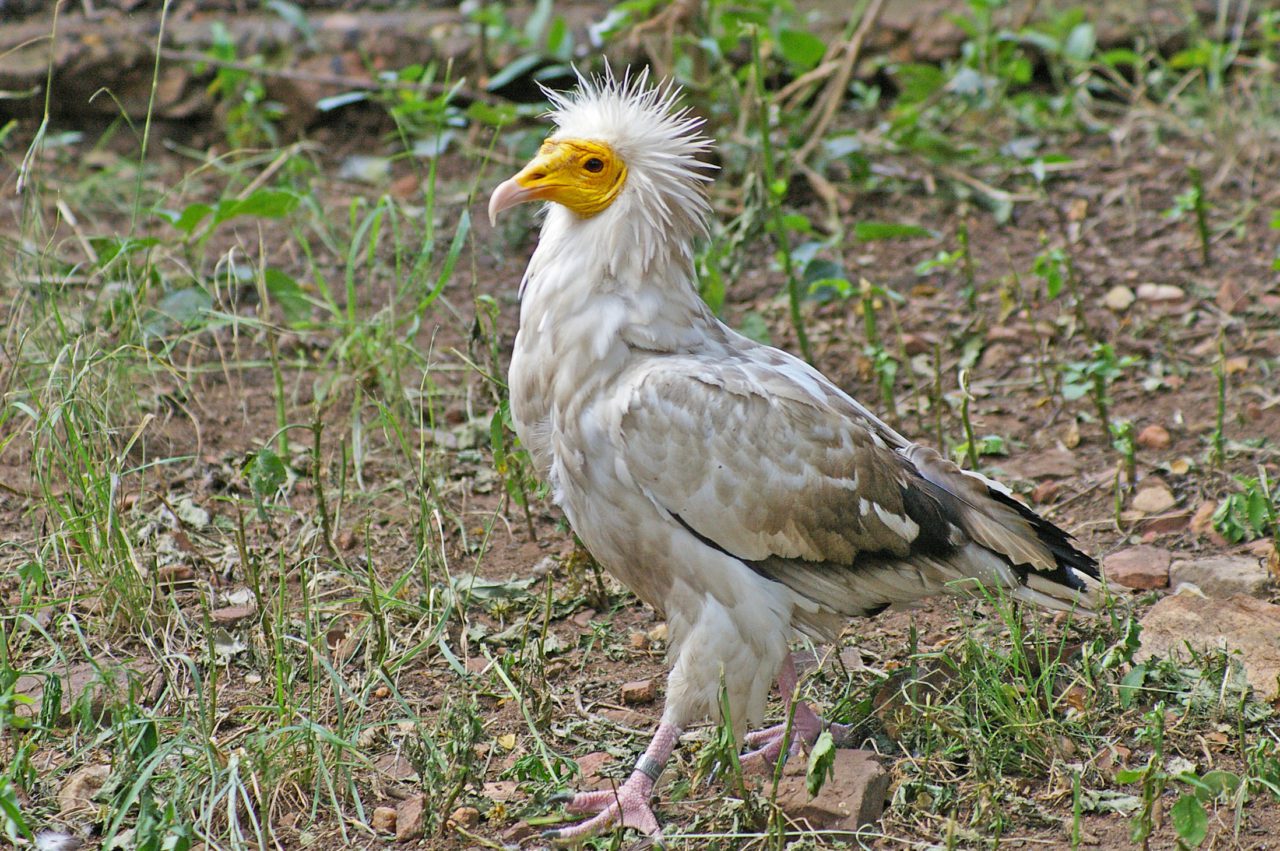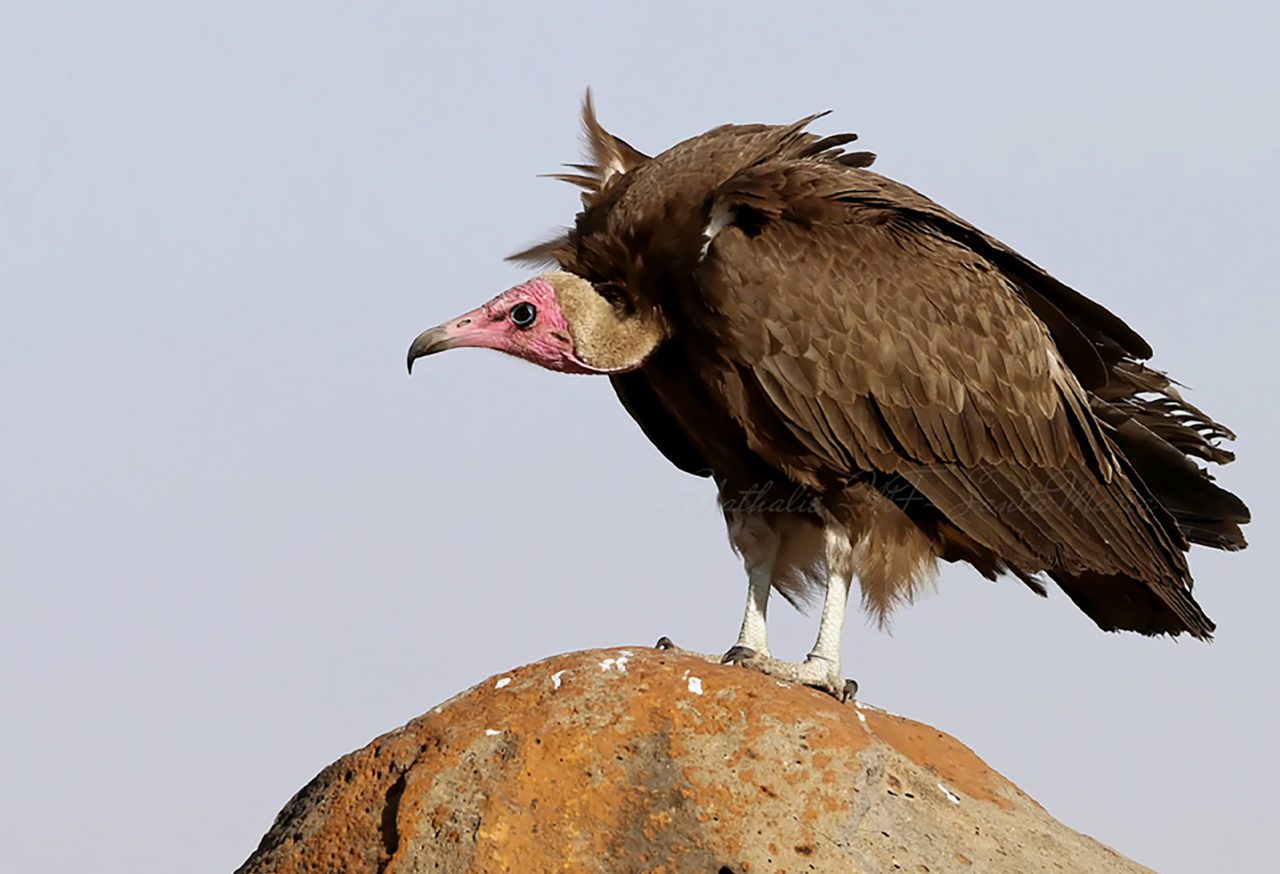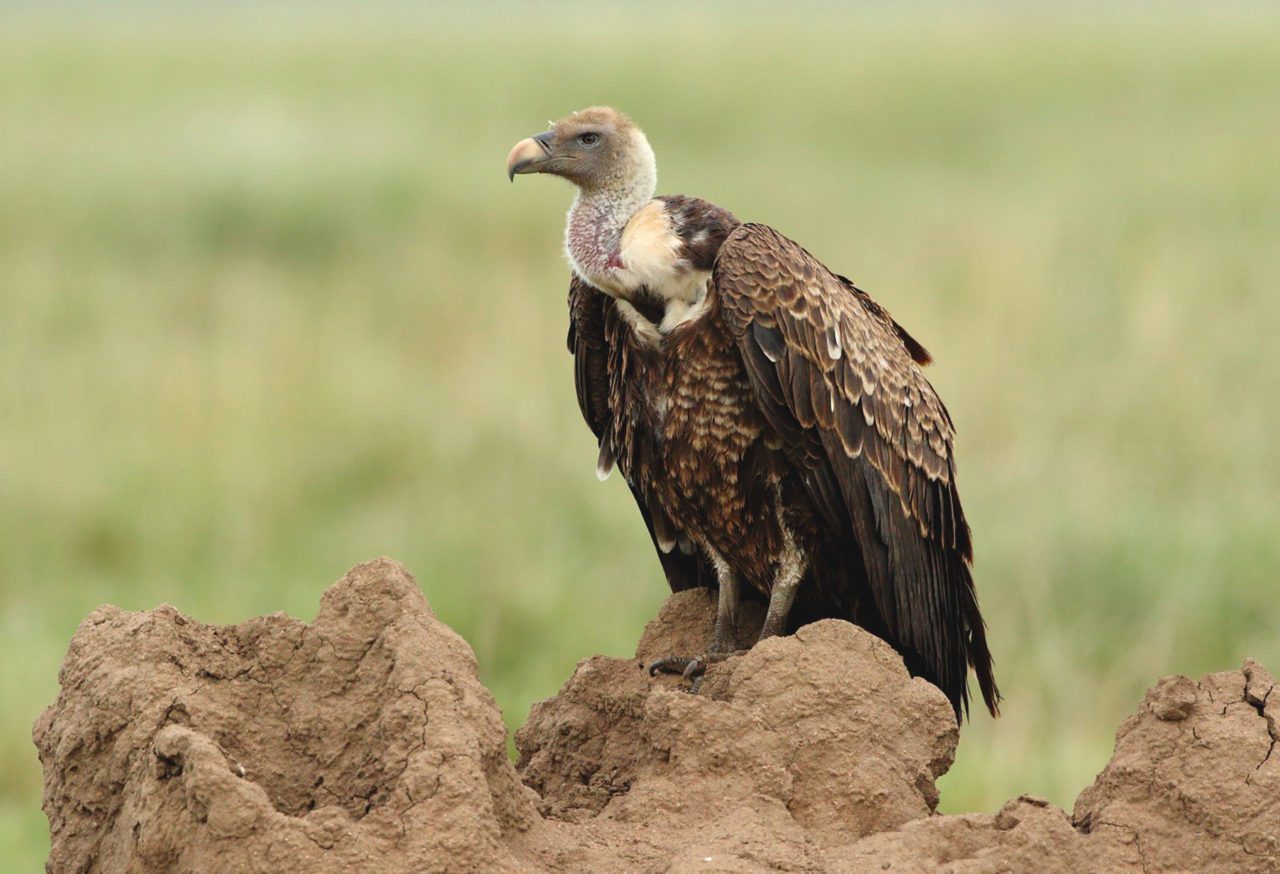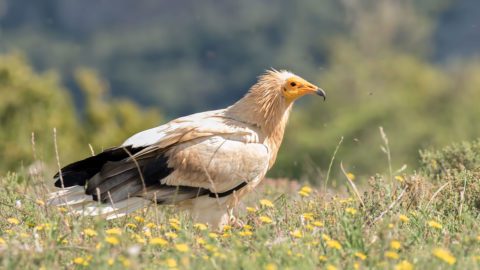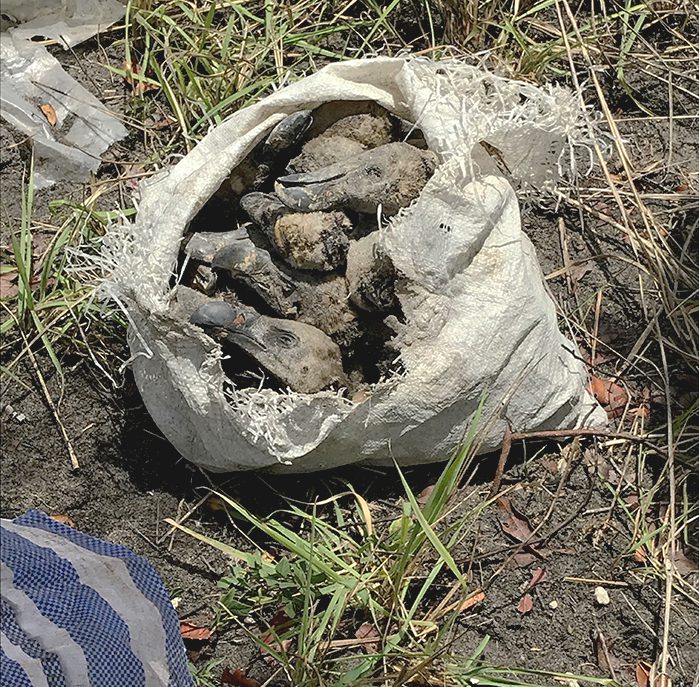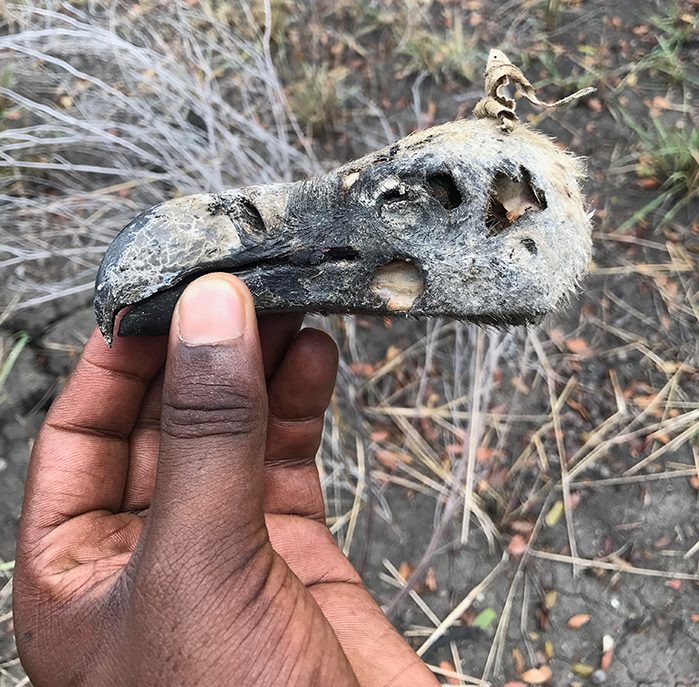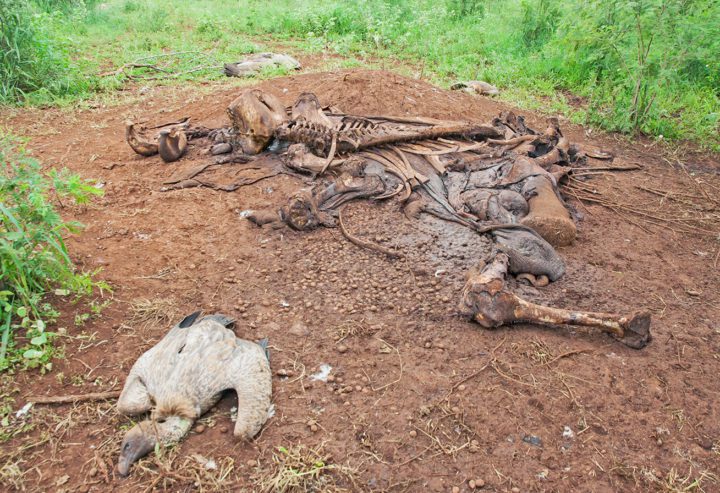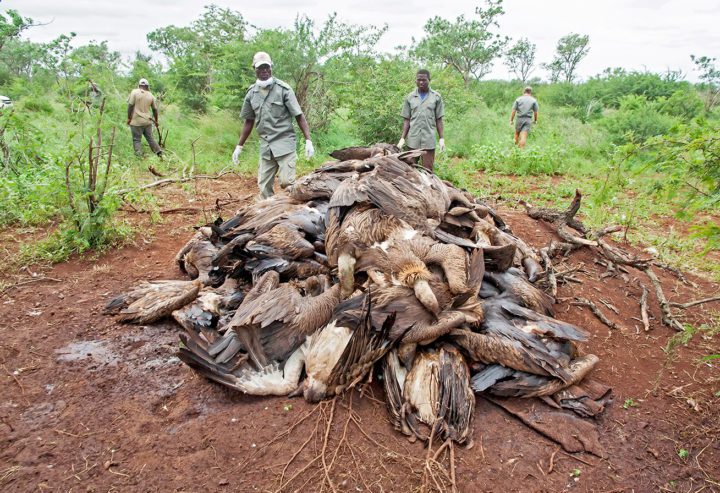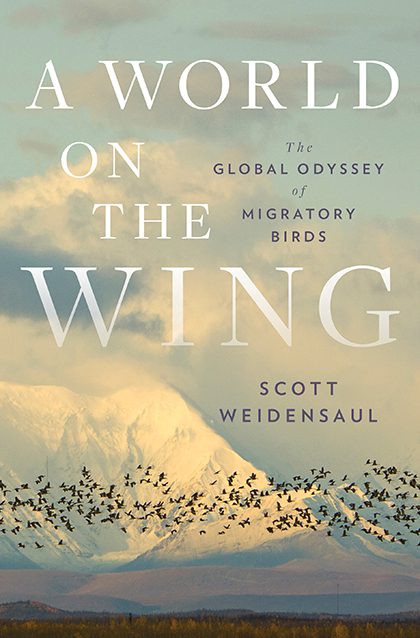The Race to Save African Vultures
A dozen species of African vultures are in population freefall—hunted for cultural uses or felled by poisons meant for lions. Conservationists and local people are scrambling to stem the damage.
By Scott Weidensaul
March 19, 2021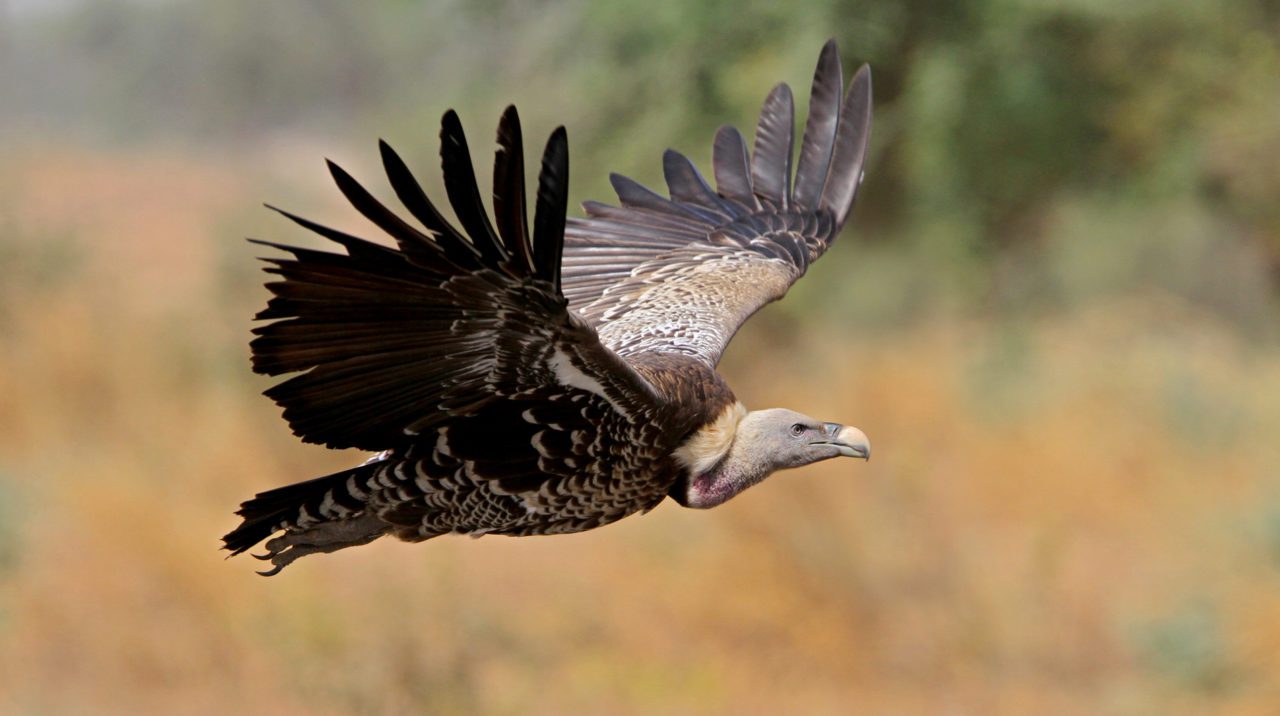
From the Spring 2021 issue of Living Bird magazine. Subscribe now.
While they may not have the same inherent majesty of a pride of lions or a racing cheetah, a scrum of vultures feeding at a carcass on the African savanna is every bit as iconic of that continent as the graceful, swaying gait of a giraffe. What’s more, vultures play an incredibly important ecological role—hence the reason for deep alarm among conservationists about the growing collapse of Africa’s once-abundant vulture populations.
Vultures are already the most threatened group of raptors in the world, which is why, in some respects, the unfolding crisis in Africa feels like the repeat of a bad dream that played out in South Asia in the 1990s. There, vulture populations—especially in India, Pakistan, and Nepal—rapidly crumbled after farmers began treating their livestock with a cheap nonsteroidal anti-inflammatory pain reliever (NSAID) called diclofenac, which eases aches and increases milk yields. It’s also, however, astoundingly toxic to many Old World vultures that feed on the carcasses of livestock treated with it. By 2007, vulture populations in India had dropped by as much as 99.9%, and by only slightly less apocalyptic rates elsewhere in the region—almost all because of diclofenac.
Frantic, last-ditch efforts like captive-breeding programs and campaigns to stop the veterinary use of NSAIDs have stabilized the vulture population in Asia today, at least somewhat. But now a similar collapse is playing out across Africa—with different driving forces that make the situation at once more challenging, and perhaps more hopeful, for those trying to stave off another vulture disaster.

The White-backed Vulture is listed as Critically Endangered by the International Union for the Conservation of Nature (IUCN). Image by André Botha. 
The Egyptian Vulture is listed as Endangered by the IUCN. Image by by André Botha. 
The Hooded Vulture is listed as Critically Endangered by the IUCN. Image by Nathalie Santa Maria/Macaulay Library. 
Rüppell’s Griffon is listed as Critically Endangered by the IUCN. Image by Markus Lilje/Macaulay Library.
Seventy percent of African Vulture Species Are Endangered
Seven of Africa’s ten vulture species are now listed as endangered or critically endangered, with some populations falling by as much as 97% in the last few years. The steepest declines have occurred in West and East Africa and have even hit protected areas such as parks, with White-headed and Egyptian Vulture, and Rüppell’s and Cape Griffon populations dropping fastest.
The list of threats to vultures in Africa is long and complex: NSAID poisoning (which is still a relatively minor issue compared to Asia); habitat loss; electrocution and collision with a rapidly growing power grid infrastructure; ingestion of lead ammunition from feeding on animals killed by hunters; and human disturbance at breeding colonies, including egg-collecting and recreational rock-climbing. Food scarcity is also a problem for vultures, especially in West Africa, where large-mammal populations have fallen 60% since 1970. And vultures are frequently the unintended victims of livestock growers who illegally use pesticide-laced carcasses to kill off predators that threaten their herds, such as lions, jackals, and hyenas. Poisoning accounts for more than 60% of the vulture deaths in Africa every year.
“A lot of the things that affect vultures are not aimed at vultures,” says Darcy Ogada, assistant director of Africa programs for the Peregrine Fund and lead author of a 2016 paper in the journal Conservation Letters that thrust Africa’s vulture problem into the global limelight.
More on Vulture Conservation in this Issue
But, Ogada says, the biggest threats to African vultures come when poisons are aimed directly at them. In particular, a burgeoning trade in vulture body parts for traditional belief-based use (mostly as good-luck charms) uses poisons like carbamate pesticides as the preferred method of killing.
“In southern Africa and parts of West Africa, people believe the use of vulture parts provides you with a degree of clairvoyance,” explains André Botha, the Vultures for Africa program manager at the Endangered Wildlife Trust and cochair of the vulture specialist group for the International Union for the Conservation of Nature. The myth that vultures use clairvoyance to find faraway carcasses has led to the belief that consuming vulture parts can convey ESP to humans.
“People tend to use it for betting and gambling, but we also know examples where people used it to predict the outcome of exams,” he says.
Although there is a modest food market for smoked vulture meat, most buyers simply want to possess part of a vulture, especially the head, believing it will improve success in business, raise the IQ of children, cure a variety of illnesses, and generally bring good luck and ward off evil.

Some of the illegal trade in vulture heads is marketed to students in northern Tanzania to help with their exams. Photo by Allan Baino. 
Parts of vultures are sold as good-luck charms and are said to provide clairvoyance. Photo by Allan Baino.
The decline and likely extirpation of White-backed Vultures from Nigeria has been blamed on belief-based trade in that country. The most shocking examples of poisoning for trade, though, have occurred in Guinea-Bissau, where more than 2,000 Hooded Vultures—a species already listed as critically endangered—have been killed since 2019. Hundreds of poisoned vultures have been found at a single site, many without their heads. Given that this small West African country holds about 43,000 Hooded Vultures—more than a fifth of the world’s population—the losses have seriously alarmed conservationists, who see trade connections to larger, more populous countries like Nigeria as driving the demand. Botha notes that the use of vulture parts as charms has a long history, with hunters using traditional means to kill vultures.
“But now, using modern pesticides, single incidents can kill hundreds and, as in the case of Guinea-Bissau, even thousands of birds,” he says.
While belief uses are strongest in West Africa, the practice has a sizable foothold in southern Africa, Botha says. Experts see a disturbing rise in East Africa as well.
“The sort of good [vulture] populations remaining in West Africa probably won’t stay that way for very long,” Ogada warns, with the economic turmoil and job losses of the COVID-19 pandemic adding fresh incentives for people to monetize vultures.

Dead vultures at a poisoned elephant carcass. Photo by André Botha. 
Poachers poisoned more than 100 vultures at a single elephant carcass in southern Mozambique in 2018. Photo by André Botha.
Ogada says African vultures are also targeted in so-called sentinel poisoning, a common practice in which elephant or rhino poachers dose a carcass with toxins to preemptively kill off vultures so there are no gathering flocks of wheeling, gangly birds circling above an illegal kill to tip off the authorities.
The explosion in elephant poaching in the early 2000s drew international attention and condemnation, but elephant poachers also killed enormous numbers of vultures. Most notable among numerous incidents, as many as 500 vultures died at a single poisoned carcass at a national park in Namibia, and more than 150 vultures were killed at a dosed elephant body at Kruger National Park in South Africa. (In most cases, rapid decomposition meant that conservationists were unable to determine exactly which species of vultures were involved.)
Sentinel poisoning is an issue that’s largely beyond vulture conservationists’ control, says the Peregrine Fund’s Ogada. But thankfully for elephants and vultures, it may be on a downward trend. Whereas sentinel poisoning accounted for about a third of the vultures killed in Africa each year in the early 2010s, Ogada says sentinel poisoning has decreased significantly in some countries, thanks to international pressure and stronger enforcement on elephant poaching.
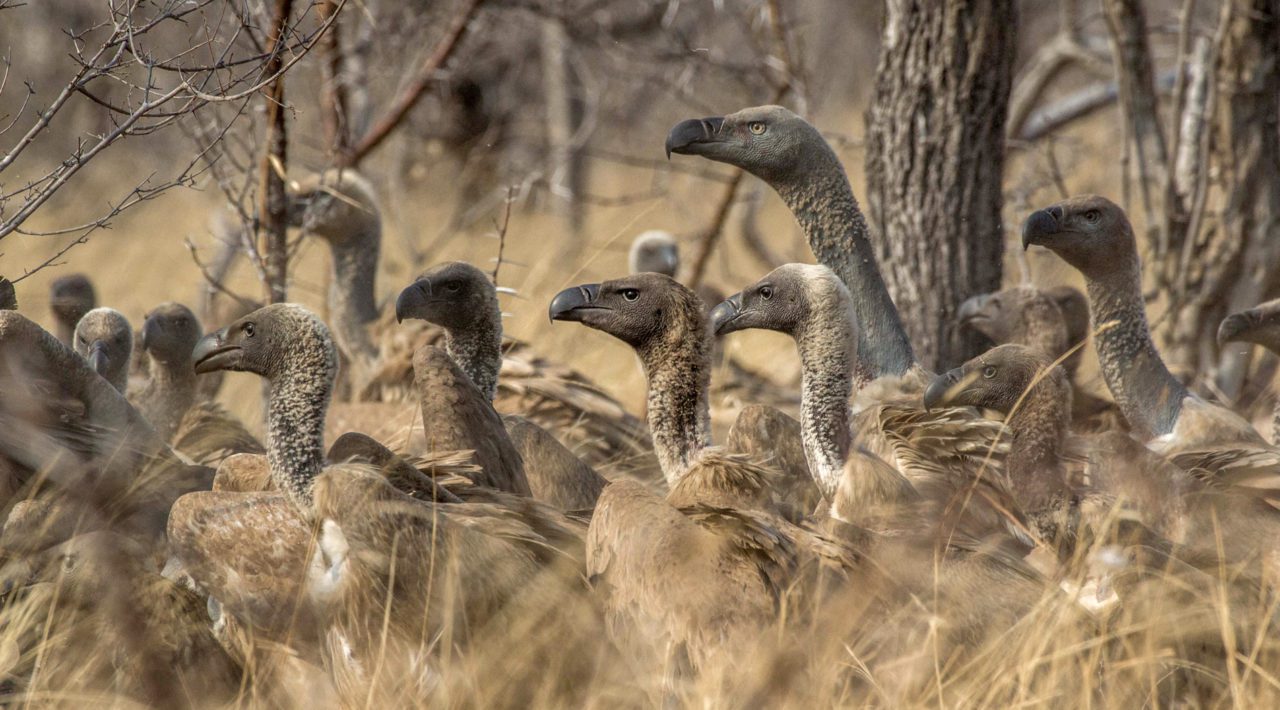
A Reason for Hope
For all the bad news, conservationists have taken heart from the fact that the decline in African vultures has been slower than the extraordinarily rapid collapse that occurred in Asia, which has given them time to mobilize and respond. But they recognize the task of saving the continent’s great scavengers will not be easy. Some Africans view vultures with superstitious dread, and few understand their ecological importance, which is why vulture specialists are fighting back with education and training.
Through the Endangered Wildlife Trust’s poisoning intervention program, which Botha started, he and his colleagues have trained more than 2,500 conservation rangers, law enforcement officers, and veterinarians in southern Africa to detect, prevent, and prosecute wildlife poisoning events. He has worked with Ogada to begin similar training in Kenya, where the Peregrine Fund has joined forces with a nonprofit group called Lion Landscapes to provide a two-part education program for communities. Participants spend one day learning about the dangers of poisons and the importance of vultures, and the second day on how to build better, more secure livestock corrals, known locally as bomas, out of chain-link fence and sturdy gates. Improved bomas means fewer instances of wandering livestock lost to predators, and thus a reduced incentive for communities to poison lions or hyenas—and also vultures that feed on poisoned bait or secondarily poisoned predators. In the year and a half before the pandemic hit, the partnership had facilitated the building of 350 such corrals.
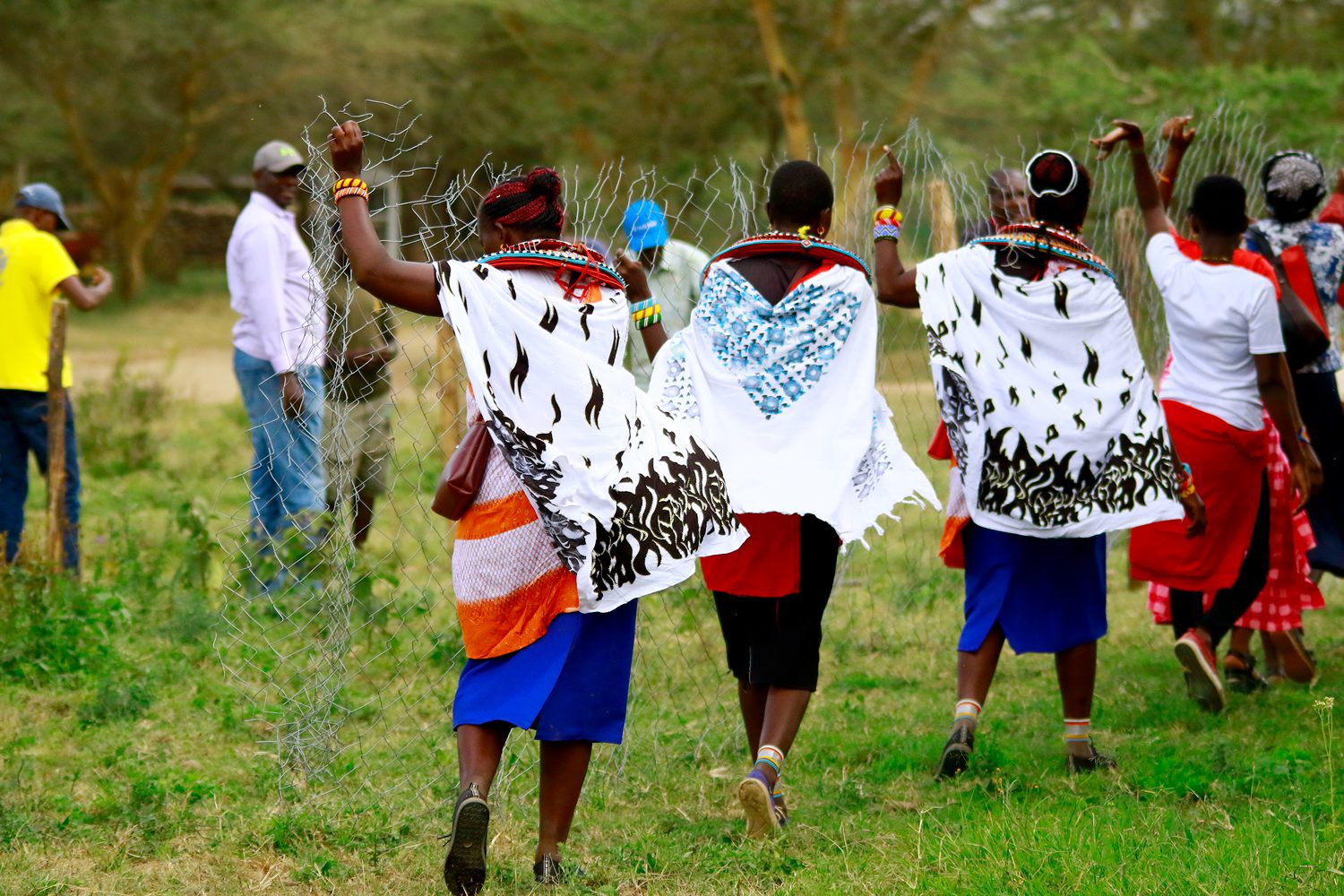
“Communities generally just want the boma training, but we won’t do the boma training with a community without doing the poisoning [segment] with it, because we know that if a boma fails or they don’t build it, the first thing they usually do is poison,” Ogada says.
There have been other significant signs of progress. In 2017, a multi-species action plan drafted under the auspices of the U.N. Convention on Migratory Species—and covering all 16 species of African and Eurasian vultures—was approved by 128 countries in Europe, Asia, and Africa. Botha is serving as the coordinator for the plan, which sets targets for reducing and eventually eliminating various kinds of poisoning, focusing first on protected areas and nearby buffers. The plan also focuses on international efforts to eliminate the veterinary use of NSAIDs and calls for the identification of areas where electrical infrastructure, including proposed wind farms, poses the greatest risk to vultures. In February 2020, the 131 nations that are party to the U.N. Convention on the Conservation of Migratory Species of Wild Animals came to an agreement for testing of all NSAIDs for vulture toxicity, the withdrawal from veterinary use of NSAIDs that are toxic, and vulture-safety testing for new drugs.
Another approach that shows promise is the creation of vulture safe zones, or VSZs, a technique pioneered in Asia in which a buffer is created around a vulture population stronghold. Within VSZs, diclofenac use is aggressively combatted and drug-free carcasses are provided at artificial vulture feeding stations.
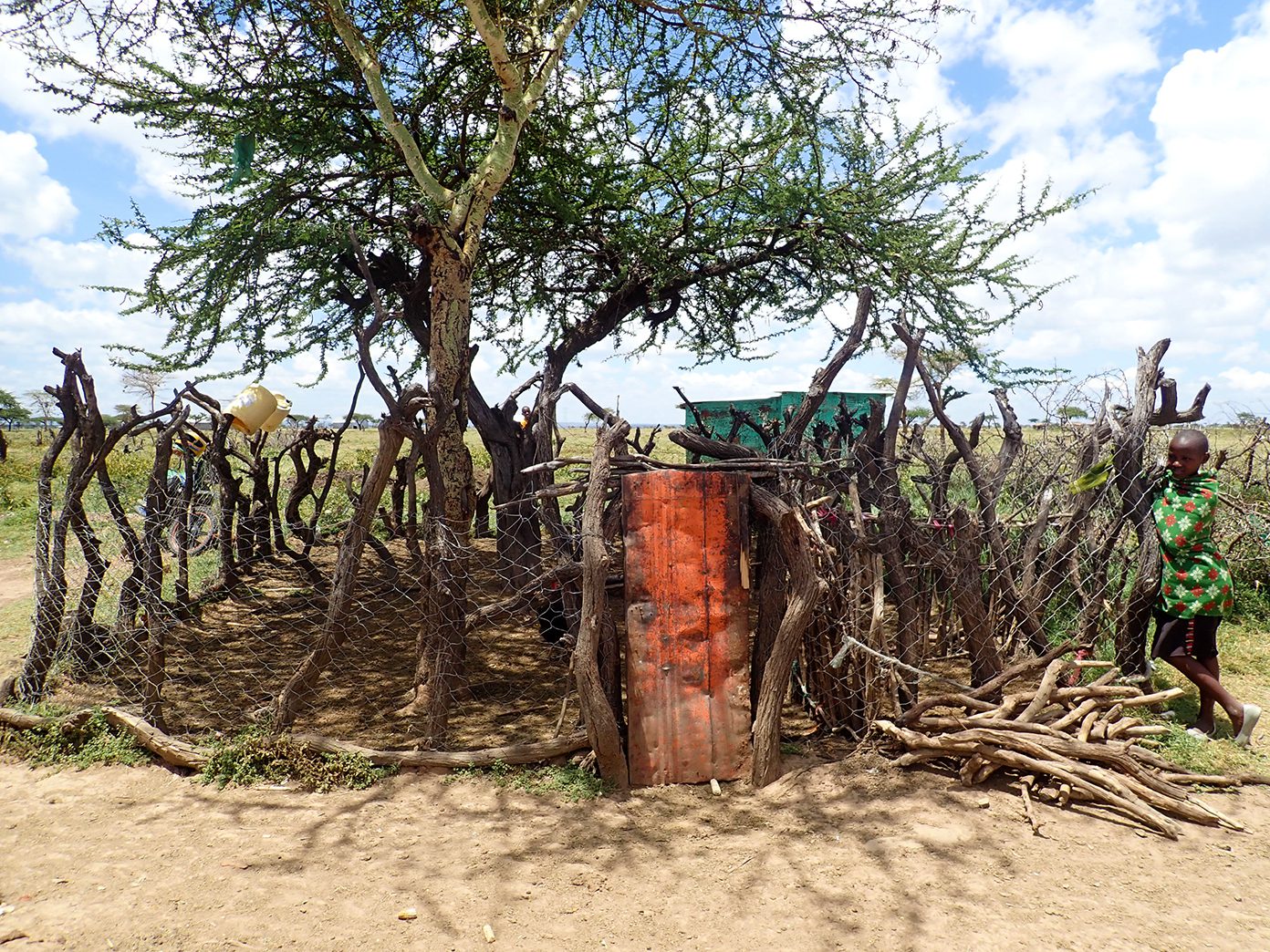
However, Botha says the situation in Africa calls for thinking on a bigger scale.
“In Asia, they’re looking at about a 150-kilometer radius around a breeding site or feeding location, but we know from tracking that [African vultures] are so incredibly mobile,” Botha says. Many African vulture species roam over immense areas every day, and with more than 50 countries on the continent, a single vulture may cross three or four international boundaries on a single daily foraging trip. “In Africa, because of the far more complex suite of threats the birds face, you need to think in much wider terms than that.”
For that reason, African conservationists are turning to the creation of multinational VSZs, like one announced in September overlapping the borders of Zimbabwe, South Africa, and Botswana.
“In this area we find the largest breeding colony of Cape Griffons on the planet, about 1,400 pairs of birds nesting at the single colony in the zone,” Botha says. “There are also significant populations of tree-nesting vultures, like about 300 pairs of White-backed Vultures that nest in the riparian vegetation along the Limpopo River,” which forms the border between the three countries.
Of the 11,500 square miles that the safe zone would encompass, 80% is private land, including several immense private game reserves. Botha says conservationists will work with the private landowners within the VSZ (which include corporations like the DeBeers diamond company), as well as national, provincial, and local governments to bolster existing legal protection for vultures, and energy companies to reduce the chance of electrocution and powerline collisions. Conservationists are also exploring antipoisoning interventions and the use of supplementary feeding stations to provide vultures with a safe supply of food. If successful, Botha says, it will serve as a model for similar transnational zones elsewhere in Africa, like the Maasai Mara in East Africa, where vultures follow migrating game herds across boundaries.
“There are promising signs, but if you think of Africa as a whole, there’s a lot that needs doing,” Botha says. “The scale of the challenge is massive. We try to box clever and work in those key areas we have identified, build these strongholds so that we have populations that are maintained there.
“Then we start looking at expanding that work and maybe gain areas and habitat for the birds in the longer run,” Botha says. “But that’s some way down the road.

All About Birds
is a free resource
Available for everyone,
funded by donors like you
American Kestrel by Blair Dudeck / Macaulay Library
